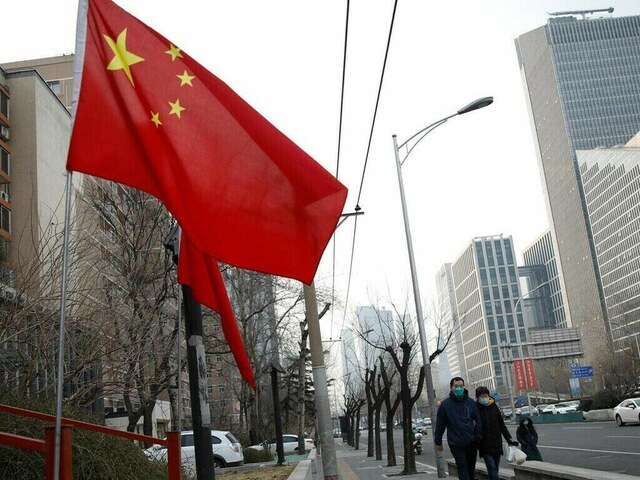Saturday, Oct 25, 2025 | 02 Jumada Al-Awwal 1447
Saturday, Oct 25, 2025 | 02 Jumada Al-Awwal 1447

JINHUA: China’s economy continues to command global attention as its nominal Gross Domestic Product (GDP) reached nearly USD 19 trillion this year, consolidating its position as the world’s second-largest economy after the United States.
Despite slower growth compared to the past decade, China remains a central driver of global trade, technology, and investment.
Recent projections indicate that the country’s growth rate for 2025 is around 4.8 percent — a moderate pace compared to its historical peaks, highlighting the government’s emphasis on sustainable, high-quality development.
This economic context was shared with a visiting journalist delegation from Pakistan during a specialized media training and cultural exchange programme at Zhejiang Normal University in Jinhua. The ongoing initiative aims to enhance professional skills, foster mutual understanding, and strengthen media cooperation between China and Pakistan.
During the training, participants are engaged in workshops on digital journalism, media ethics, and cross-cultural reporting, along with visits to different cities and cultural sites.
The programme highlights China’s advancements in modern media education and provides Pakistani journalists with firsthand experience of the social and technological transformations taking place in China.
China’s vastness and diversity underpin its complex national character. The country consists of 34 provincial-level administrative regions, including 23 provinces, five autonomous regions, four municipalities, and two Special Administrative Regions. Home to 56 ethnic groups, with the Han ethnicity accounting for about 90 percent of the population, China is not only demographically immense but also culturally varied.
Geographically, it spans a three-step terrain descending from the western plateaus to the eastern plains and coastal areas, with over 1,500 rivers—including the Yangtze and Yellow Rivers, the latter giving birth to one of the world’s oldest civilizations.
China’s 5,000-year-old civilization continues to shape its modern identity. Monuments such as the Great Wall, the Terracotta Warriors in Xi’an, and the scenic Huangshan Mountains remain enduring symbols of its cultural heritage. Yet, modern China’s transformation began only in the late 1970s with the Reform and Opening-Up policy, which turned an agrarian economy into a global manufacturing and industrial powerhouse.
Over the last four decades, China has achieved what is often described as the most rapid industrialization in human history. Its GDP has expanded more than a hundredfold since 1978, and hundreds of millions have been lifted out of poverty. The country’s technological ambition is equally striking—spanning electric vehicles, renewable energy, artificial intelligence, and high-speed rail networks.
However, this growth has also brought challenges: a slowing population, a maturing industrial base, high local-government debt, and an overheated real estate sector. These have forced policymakers to shift priorities from quantity to quality, from investment-driven expansion to innovation and consumption-led growth.
At present, China’s economy remains a study in contrasts—its industrial might and infrastructure lead the world, yet its per capita income still trails far behind advanced economies. The government continues to pursue a balance between market liberalization and socialist governance, seeking to maintain stability while deepening structural reforms.
The ongoing urbanization policy has expanded cities and generated massive consumer markets, while rural revitalization programs aim to reduce disparities between inland and coastal regions.
Internationally, China’s role as a trade and investment partner remains critical. It maintains strong cooperation frameworks with developing nations, including Pakistan, under initiatives such as the Belt and Road Initiative (BRI). The government’s foreign policy emphasizes peaceful development and mutual economic benefit, though global competition—particularly with the United States—continues to shape its strategic choices.
In essence, today’s China is defined by its duality: an ancient civilization advancing boldly into the future. With nearly USD 19 trillion in GDP, and a growth rate stabilizing around 4.8 percent, it remains an indispensable pillar of the world economy.
The next phase of its development will test its ability to sustain prosperity, manage demographic transitions, and reconcile rapid modernization with environmental and social balance. As one of the world’s oldest yet most dynamic nations, China’s evolution continues to be both a lesson and a challenge for the modern world.
Copyright Business Recorder, 2025